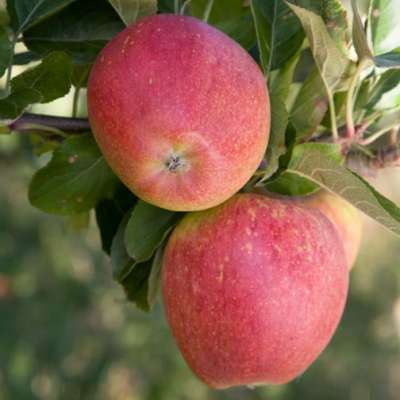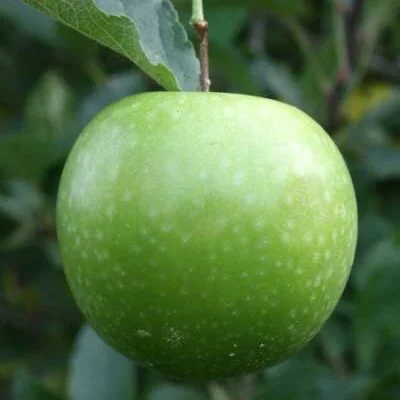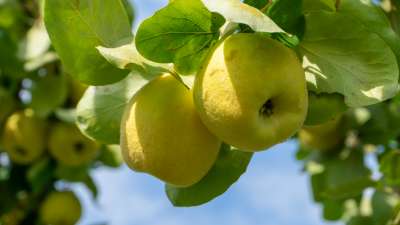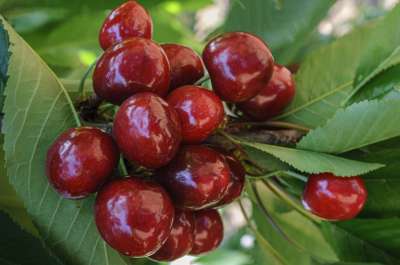Your basket is currently empty!
Fruit culture in polythene tunnels
So you’ve just had your first poly-tunnel erected and stand within surveying your new protected growing oasis. Exciting times! But to make the most of what is not an infinite space within, some careful thought and planning needs to go into your planting to get the best – and most – of your new gardening investment. Hopefully this article will guide and inspire you to make the best choices that are also right for you.
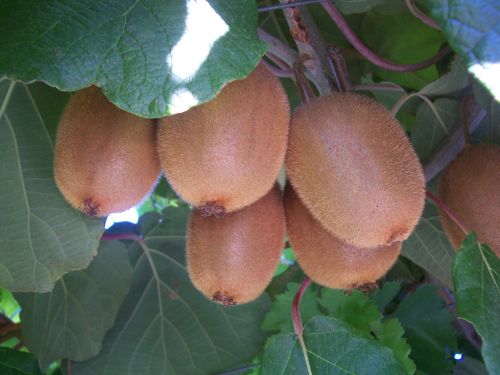
A planting plan for fruit
With it’s sloping sides vertical planting space is usually at a premium, plus, unless you happen to be very short, you need practical access along the length of the tunnel as well! With this in mind it’s usually best to have a path or walkway down the centre of the tunnel and plant taller subjects either side of the path as column trees of fan trained supported with post and wire frames. Allow a gap between the trees every now and then so you can reach the outer perimeters of the tunnel. You can then use this shorter space for lower growing plants, fruits and salads maybe.
What to plant in your tunnel
For most of us the polytunnel is such a boon to gardening because of a harsher outdoor climate, maybe you live in the North or in an exposed position. Not only can it enable the cultivation of fruits that otherwise might not thrive, it also brings the season forward – you will find compared to the same crop grown outdoors without protection, that the ripening period is often a full 2-3 weeks earlier, even without additional heat. It also provides protection from birds which might otherwise spoil the crop. These are the things worth bearing in mind when choosing what to plant. As space will usually be at a premium it makes sense to devote that space only the subjects that will gain the greatest advantage. My list below is a recommendation of the crops that are of most value grown under protection but of course a certain amount of personal subjection will inevitably come into play as you make your your final shortlist.
Pollination
You must remember that often there will be few or no pollinating insects around to do what would normally come naturally and set the flowers. So be prepared to go round the tunnel with a soft haired brush and pollinate by hand, dabbing pollen transferred from one flower to another. This is quite a pleasurable pastime I have to admit!
Diseases and variety selection for fruit growing under cover
One disadvantage of a polytunnel is the close, humid atmosphere can become a breeding ground for fungal diseases in particular, but also insect colonies like red-spider and aphids which will thrive. Good cultivation practices and an eagle eye for spotting problems before they get entrenched will go a long way to helping in this respect but by selecting varieties that are naturally more resistant you will get the best from your endeavours.
Irrigation
As the soil within the polytunnel will receive no natural rainfall remember to either install an automatic irrigation system with a timer – well worth the added trouble and expense I can assure you – or at least have a hose pipe fixed up that will service the entire length of the tunnel. This is of course even more relevant if,as is likely, you also have plants growing in pots and containers or growbags. Regular watering is the number one priority with protected cropping as the plants will dehydrate far more quickly with the added heat and magnified strength of the sun during the summer months. I speak from personal experience, having a number of poly tunnels on the nursery! It is often tempting to spray the water over the foliage of the plants but infact this is bad practice within the confines of a polythene tunnel or greenhouse. Apply water to the base of the plants wherever possible. This is because constantly wet foliage is more likely to go down with fungal diseases. Also pay attention to adequate ventilation so the atmosphere is a little less humid.
So here’s a run down of my tips for the crops that would most benefit from covered production, and the varieties most suited.
Strawberries in Tunnels
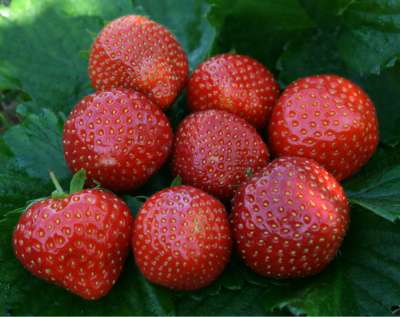
These luscious soft fruits are pretty easy to grow outdoors in virtually all areas so why afford them space in your poly tunenel? Because you can significantly extend the harvest season just by choosing a few valuable varieties, by several weeks. This encompasses not only the earlies, which can be harvested in May under plastic, but also at the end of the year. Perpetual and Autumn fruiters will usually continue to produce and ripen indefinitely, as long as protected from frost and there is sufficient warmth in the sun to ripen the fruits. In a polytunnel it’s not unusual to still have decent berries ripening in December. Emily, being the earliest naturally, is a real boon for protected cropping. Cambridge Vigour, a compact oldie, is naturally suited to forcing. Elvira has always given very good results with protected fruiting and is second early. And at the other end of the season Flamenco and Malling Centenary produce superb results deep into the season. Another one to try is the day neutral variety ‘Seascape’ Make sure to provide extra feed for the everbearers as they continue to crop, to ensure the quality stays high and the plants remain viable.
Blueberries
These attractive blueberry bushes produce fantastic results under plastic with flavourful big berries which ripen earlier than their outdoor counterparts. They also stay protected from their number one enemy, birds, who love ripening blueberries just as much as we do. Goldtraube, Polaris and Jersey have produced particularly good results. Remember to provide a lime free soil, or grow them in containers using an ericaceous compost. You will need to plant two different varieties to cross pollinate.
Cherries in Poly Tunnels
These are the most variable of fruit trees when grown in the open. Sometimes they produce good crops but other seasons they miss, they can be quite prone to cold Springs and late frosts or cool summers. Commercially most Cherry crops are grown in large poly houses because the quality is so much better, not to mention the increased yield. The frost free flowering period and extended warmth just encourages them to give of their best. One thing to remember is that there may be few or no pollinating insects in your poly tunnel atf lowering time, so make sure you hand pollinate the blossom with a soft haired brush. All varieties are suitable but Sunburst Cherry Trees, Stella, Summer Sun Cherry Trees, Lapins Cherry Trees and the season extending Regina Cherry Trees are all recommended. Merton Glory with it’s sweet whitish-pink fruits is also a star. You must grow these on Gisela stock to ensure they don’t grow too big; or you can fan train across one gable end.
Figs
Although ultimately capable of making large trees, these are easily contained with a restricted root run and the fruits produced with the added warmth are extra-luscious and ripen more reliably, especially the later flush which outdoors probably wouldn’t reach maturity. The leaves can reach almost tropical luxuriance and size, making a fig tree an immensely enjoyable addition to your polythene tunnel. Brown Turkey, Brunswick and White Marseilles are all equally suited.
Grape Vines
Of course growing grape vines – a classic for any greenhouse and equally suited to the polythene tunnel where the bunches of grapes produced will be of greater quality, size and juiciness. Growth can be quite overwhelming so I recommend fan or cordon training to keep them in bounds and being restrictive with the growth will concentrate the vines resources into production instead so it’s a win win situation. There’s no restriction on the varieties, all are suitable including the indoor varieties which attain there full splendour with the added warmth. Varieties like Rembrandt, the historic Black Hamburgh and Buckland Sweetwater and quite magnificent. You can also grow the seedless Lakemont and Flame which might otherwise struggle in less favoured areas outdoors. Another grape vine well worth considering is the enticingly strawberry flavoured ‘Fragola’
As there is an increased risk of mildew grown in the humid atmosphere the following varieties, all of which have some natural resistance, are well worth considering: Regent, Dornfelder, Theresa, Queen of Esther and Phoenix.
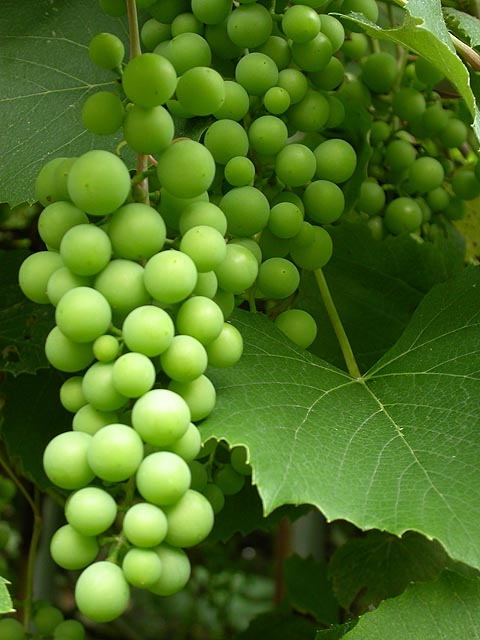
Apricots Under Cover
Although increasingly grown with success in favourable aspects outdoors, these remain the least hardy of all tree fruits for the UK and the very early blossom is frequently affected by late frosts. So an apricot would be the number one choice of many for protected cropping. The trees natural vigour needs tempering by fan training, which can keep it just within the height of the average poly tunnel, and would require about 2 metres width as well. You could grow the lavishly large and juicy French variety Tomcot, or Goldcott is really good. Alternatively look at isabelle, which is naturally compact, far smaller than a normal bush apricot which would be too big. Isabelle Apricot Trees could also be grown in a 20 litre capacity container. How tempting! All apricot trees are self fertile and would need hand pollinating whilst in flower for reliable fruit set.
Growing Peaches and Nectarines
Another fruit that is a bit more tricky outdoors is the Peach and Nectarine. Although a little hardier than Apricot they can still be susceptible during harsh winters to die back, and the beautiful spring blossom is quite early to open. As all are self pollinating the choice is wide. Again fan training is the best option as bush trees are just a bit too tall. Dwarfing versions do exist – look for Garden Lady peach or Nectarella Dwarf Nectarine. These handy mini trees will reach only 4-5’, well within the confines of a polythene tunnel. Standard varieties that should be on your shortlist include the divine Kestrel, indoor specialist with the super-sweet flavour Wassenberger or the regally coloured Red Haven.
Kiwi Fruits – Chinese Gooseberries
Unless you happen to have a sunny warm south or west wall, then you won’t have much success with Kiwi vines which seldom thrive long term in more open situations. So growing in a polytunnel makes perfect sense, although I have to warn you they can be rather exuberant – but the crops from an established vine can be tremendous. The vines themselves too are rather attractive with big rich emerald green felted heart shaped leaves. To get the best quality fruits, plant one or two female varieties to one male for pollination purposes. Hayward or Bruno are good croppers and Atlas is the best pollinator. If you don’t want to afford the space for two or three vines, then you could consider a self fertile variety which many find easier. Results are worthwhilee but the yield, quality and size of the fruits is inferior. The flavour is however very good. Solo and Jenny are the main self fertile kiwi fruit vines available.
Forcing Rhubarb
Rhubarb won’t do very well long term planted in a polythene tunnel, besides which it takes up a lot of space and isn’t going to benefit much from the added protection – except when it comes to gaining an extra early crop. Gardeners have been forcing rhubarb for years, with just a little attention you can be harvesting super juicy sticks of rhubarb from February or even sooner. The way to get full advantage of this in your greenhouse or polythene tunnel is by setting aside a good healthy clump, growing in a large container or barrel, cover it over as it begins to shoot at the base, and bring it in to the tunnel with the ambient daytime temperature will invariably be higher than that outside. Growth will romp away; by bringing the rhubarb in at around the new year, you can often be harvesting 2-3 weeks later. The best forcing varieties are Timperley Early and Stockbridge Arrow. When you have harvested the sticks, stand the clump back outside again, you could plant it out and then dig up another clump to pot it for next years forcing, thus operating a relay system.



